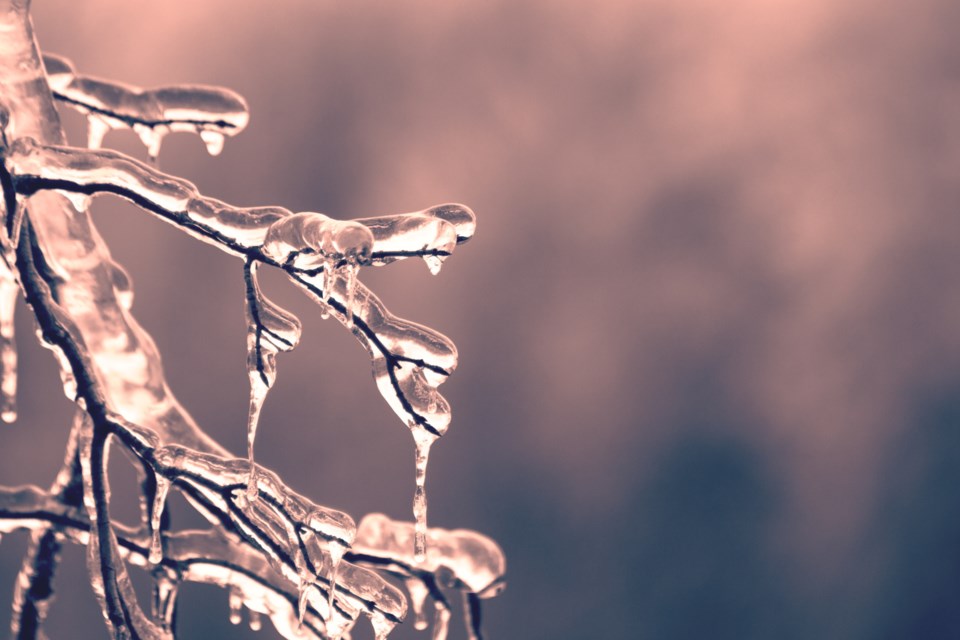For many, winter is a cozy retreat inside, sipping hot cocoa by the fire, or bundling up in blankets on the couch to watch football, but what are all the tiny creatures – invertebrates – doing to survive the cold months?
Prior to spring and invertebrates’ indispensable return for duty as pollinators, decomposers and more, how do they survive the harsh winters of Colorado or locations even further north? Insects and other invertebrates that share our earth have developed a host of adaptations and fascinating strategies to ensure survival through extreme cold, ice, and snow.
The most famous winter survival strategy, perhaps, is migration. The monarch butterfly is well known for its many-thousand-mile journey from the cold climate of Canada to the Oyamel fir forests of southern Mexico. In addition to migration to a warmer location, the monarch butterflies that overwinter there enter a metabolic state known as reproductive diapause – essentially halting the development of their reproductive organs until ideal breeding conditions arrive in early spring. Other species of butterfly, such as the mourning cloak, will not migrate and instead seek shelter under loose tree bark, freezing and thawing their body with help from natural antifreeze chemicals stored in their tissues.
Honeybees also remain local, using social cooperation and energy from honey to keep each other warm. The colony forms a ball and shivers around the queen, creating heat and insulating her from the cold. The worker bees will continuously rotate positions, ensuring that the queen stays warm and that the workers do not spend too long exposed to the cold on the outside of the ball.
Invertebrates employ a wide variety of strategies to promote survival through the winter in any life stage from egg to larva or nymph, to pupa and beyond.
Praying mantises use an ootheca or foam-like egg mass to insulate 100-200 eggs that will hatch out as tiny mantises in spring.
Moth larvae, such as wooly bear caterpillars, will insulate themselves underneath fallen leaf litter.
Viceroy butterfly larvae will create a hibernaculum out of a rolled leaf and self-made silk, spending the winter in what is essentially a very small sleeping bag.
Nymphs of mayflies and dragonflies reside under the ice of streams and ponds, feeding and growing until the spring thaw when they will emerge as adults.
Silk moth caterpillars create silk cocoons on a branch of their host tree to insulate themselves ahead of forming a pupa. Sphinx moths typically form their pupae underground, using leaf litter and/or several inches of soil to protect themselves from the elements.
These invertebrate strategies for making it through the winter until the warmth and green of spring shine through are simultaneously fascinating and familiar. As humans, we put on many layers of clothing to shield ourselves from arctic chills, work to keep the pipes in our homes from freezing, or simply become one with a big pile of blankets.
Given the critical roles that invertebrates assume on our shared planet, there are several actions that humans can take to support our tiniest neighbors through a harsh season.
While snow can act as a blanket, invertebrates also rely on leaves and other plant debris to provide insulation from the winter elements – in autumn, leaving the leaves where they fall creates a robust, cozy habitat for many species.
“No Mow May” is another popular strategy to support invertebrates in early spring. As the name suggests, not mowing the first bloom in grassy areas allows for nutrient-rich, first flowers to support pollinators and other invertebrates as they emerge from a winter of sparse food. Hand in hand with planting gardens full of native nectar and host plants and with options for shelter, leaving the leaves over the winter and delaying the first mow of the year can help the invertebrate community survive and thrive.



